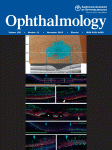Sono da tempo disponibili dei test genetici per valutare il rischio individuale di ammalarsi di maculopatia senile. Tali test sono di semplice esecuzione e molto affidabili. In caso di elevato rischio genetico ad ammalarsi è possibile modificare il proprio stile di vita e ottenere una significativa riduzione di quel rischio. Lo studio pubblicato nel novembre del 2013 su Ophthalmology arricchisce queste conoscenze e apre la strada a una terapia sempre più mirata ed efficace, attraverso la farmacogenomica. Questa è la scienza che sfrutta le caratteristiche genetiche del paziente per selezionare il regime terapeutico più utile ed efficace in modo da avere terapie individualizzate.
Lo studio dimostra che in presenza di alcuni marcatori genetici legati al fattore del complemento (CFH) la terapia con antiossidanti è molto utile, mentre la supplementazione con zinco è dannosa. Se invece sono presenti i marcatori ARMS gli antiossidanti risultano inutili mentre lo zinco offre una buona protezione. In base a queste conoscenze si può, quindi, studiare un regime alimentare e nutrizionale personalizzato per la massima efficacia preventiva nei confronti di una patologia che risulta estremamente frequente nelle fasce di età avanzate (>70 anni).
Carl C. Awh, MD Anne-Marie Lane, MPH Steven Hawken, MSc Brent Zanke, MD, PhD Ivana K. Kim, MD
Ophthalmology
November 2013, Volume 120, Issue 11 , Pages 2317-2323
Objective The Age-Related Eye Disease Study (AREDS) demonstrated that antioxidant and zinc supplementation decreases progression to advanced age-related macular degeneration (AMD) in patients with moderate to severe disease. We evaluated the interaction of genetics and type of nutritional supplement on progression from moderate to advanced AMD.
Design Genetic analysis of a randomized, prospective clinical trial.
Participants White patients with AREDS category 3 AMD in 1 eye and AREDS categories 1 through 4 AMD in the fellow eye enrolled in the AREDS with available peripheral blood-derived DNA (995).
Methods Subjects were evaluated for known AMD genetic risk markers and treatment category. The progression rate to advanced AMD was analyzed by genotypes and AREDS treatment group using Cox regression.
Main Outcome Measures The effect of inherited gene polymorphisms on treatment group–specific rate of progression to advanced AMD.
Results Over an average of 10.1 years, individuals with 1 or 2 complement factor H (CFH) risk alleles derived maximum benefit from antioxidants alone. In these patients, the addition of zinc negated the benefits of antioxidants. Treatment with zinc and antioxidants was associated with a risk ratio (RR) of 1.83 with 2 CFH risk alleles (P = 1.03E-02), compared with outcomes for patients without CFH risk alleles. Patients with age-related maculopathy sensitivity 2 (ARMS2) risk alleles derived maximum benefit from zinc-containing regimens, with a deleterious response to antioxidants in the presence of ARMS2 risk alleles. Treatment with antioxidants was associated with an RR of 2.58 for those with 1 ARMS2 risk allele and 3.96 for those with 2 ARMS2 risk alleles (P = 1.04E-6), compared with patients with no ARMS2 risk alleles. Individuals homozygous for CFH and ARMS2 risk alleles derived no benefit from any category of AREDS treatment.
Conclusions Individuals with moderate AMD could benefit from pharmacogenomic selection of nutritional supplements. In this analysis, patients with no CFH risk alleles and with 1 or 2 ARMS2 risk alleles derived maximum benefit from zinc-only supplementation. Patients with one or two CFH risk alleles and no ARMS2 risk alleles derived maximum benefit from antioxidant-only supplementation; treatment with zinc was associated with increased progression to advanced AMD. These recommendations could lead to improved outcomes through genotype-directed therapy.
Over an average of 10.1 years, individuals with 1 or 2 complement factor H (CFH) risk alleles derived maximum benefit from antioxidants alone. In these patients, the addition of zinc negated the benefits of antioxidants. Treatment with zinc and antioxidants was associated with a risk ratio (RR) of 1.83 with 2 CFH risk alleles (P = 1.03E-02), compared with outcomes for patients without CFH risk alleles. Patients with age-related maculopathy sensitivity 2 (ARMS2) risk alleles derived maximum benefit from zinc-containing regimens, with a deleterious response to antioxidants in the presence of ARMS2 risk alleles. Treatment with antioxidants was associated with an RR of 2.58 for those with 1 ARMS2 risk allele and 3.96 for those with 2 ARMS2 risk alleles (P = 1.04E-6), compared with patients with no ARMS2 risk alleles. Individuals homozygous for CFH and ARMS2 risk alleles derived no benefit from any category of AREDS treatment.strong

 CFH and ARMS2 Genetic Polymorphisms Predict Response to Antioxidants and Zinc in Patients with Age-related Macular Degenerati
CFH and ARMS2 Genetic Polymorphisms Predict Response to Antioxidants and Zinc in Patients with Age-related Macular Degenerati